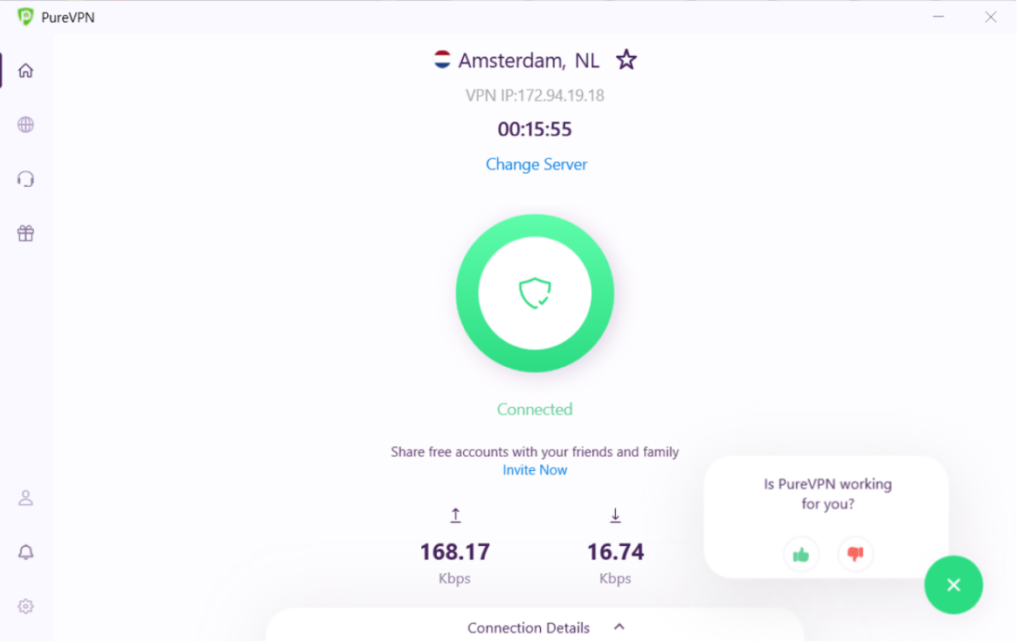Table of Contents
If you’re about to read this blog about SSL vs. TLS, either you’re a technical person or an individual who’s trying to figure out internet security’s technical jargon. Mind you, this can be boring and a nightmare to understand, but we’ve made it simple for you to understand the difference between SSL vs. TLS easily.
What is SSL?
SSL, or Secure Sockets Layer, is an encryption-based Internet security protocol. It was first developed by Netscape in 1995 for the purpose of ensuring privacy, authentication, and data integrity in Internet communications. SSL is the predecessor to the modern TLS encryption used today.
A website that implements SSL/TLS has “HTTPS” in its URL instead of “HTTP.”
What’s the difference between SSL and TLS?
Secure Socket Layer (SSL) and its newer version Transport Layer Security (TLS), are cryptographic protocols that provide security. The current SSL version is 3.0, which is widely supported by web servers and browsers. However, TLS v1.2 and v1.3 are more secure than the latest version of SS.
These cryptographic protocols authenticate data transfer between servers, systems, applications, and users. For example, SSL and TLS or SSL TSL necessarily encrypt your online data that is being exchanged between a web server and your device.
How does SSL/TLS work & Establish Connections
To understand the difference between how SSL and TLS operate, you’ll need to know how they establish connections. An SSL handshake establishes a connection via a port. On the other hand, a TLS connection facilitates implicit connections via a protocol.
This handshake is also known as cipher suites. While there are several differences between SSL and TLS, the significant difference between SSL and TLS lies in these cipher suites. These cipher suites play a crucial role in the security of your internet connection.
A cipher suite comprises a key exchange algorithm. These algorithms are the authentication/validation algorithm, bulk encryption algorithm, and a message authentication code (MAC) algorithm.
Each version of SSL and TLS has its own supported set of cipher suites. As newer versions are developed, they contain much more secure cipher suites that significantly improve the security and performance of the internet connection.
- In order to provide a high degree of privacy, SSL encrypts data that is transmitted across the web. This means that anyone who tries to intercept this data will only see a garbled mix of characters that is nearly impossible to decrypt.
- SSL initiates an authentication process called a handshake between two communicating devices to ensure that both devices are really who they claim to be.
- SSL also digitally signs data in order to provide data integrity, verifying that the data is not tampered with before reaching its intended recipient.
There have been several iterations of SSL, each more secure than the last. In 1999 SSL was updated to become TLS.
Here’s the summary of all the differences between SSL vs. TLS:
| SSL | TLS |
| SSL stands for Secure Socket Layer | TLS stands for Transport Layer Security |
| The first version of SSL was developed by Netscape in 1995. | Internet Engineering Taskforce (IETF) developed the first version of TLS in 1999. |
| SSL is a cryptographic protocol that establishes secure communication between the web server and the client. This is an explicit connection. | TLS is also a cryptographic protocol that establishes secure communication between the web server and the client. This is an implicit connection. |
| SSL has three versions: 1.0, 2.0 and 3.0. | TLS has four versions: 1.0, 1.1, 1.2, and 1.3. |
| All three versions of SSL are known to be vulnerable. Hence, they have been disapproved. | Two versions of TLS (1.0 and 1.1) are vulnerable and disregarded as of March 2020. TLS version 1.2 is widely used today. |
What port is recommended to use SSL/TLS over?
For maximum compatibility, port 443 is the standard, thus recommended, the port used for secured SSL/TLS communications. However, any port can be used.
On some networks, port 443 is blocked and with the help of PureVPN you will be able to access this port all you need is the PureVPN subscription and a port forwarding add-on.
How to enable port forwarding?
You would need to purchase the PureVPN account with the Port Forwarding add-on. Further, you can check how to active port forwarding on windows.
- After setting up the port forwarding from the member area you have to open the PureVPN app and connect with your desired location.

- Once you are connected with your VPN you can check the port on the following website. www.portchecker.io
History of SSL and TLS
SSL is about 25 years old, which is ancient in internet years. Netscape developed the first iteration of SSL, version 1.0, but did not release it as it was riddled with several security flaws. This led to the development of SSL 2.0, which was slightly better but not enough to be considered as a secure protocol.
Then came the birth of SSL 3.0, which, as we witness today, is again riddled with serious security flaws. Thus, in 1999, TLS 1.0 came out, which was incredibly similar to SSL 3.0 but substantial enough that TLS 1.0 and SSL 3.0 did not interoperate.
An improved version of TLS, TLS 1.1, came out seven years later in 2006, which was again replaced by TLS 1.2 in 2008. Currently, we are at TLS 1.3, which was finalized in 2018. The latest version comes packed with significant advances over its predecessors.
TLS 1.3 has gained so much appreciation that significant players in the internet realm are now pushing for its global acceptance. In January 2020, tech giants like Microsoft, Apple, Google, Mozilla, and Cloudflare announced plans to deprecate TLS 1.0 and TLS 1.1. This makes TLS 1.2 and TLS 1.3 the preferred cryptographic protocols.
At this point, we’ve been using TLS for nearly two decades, and if you’re still using SSL, then you’re years behind and potentially insecure.
Why do you need an SSL/TLS certificate?
The internet landscape is riddled with online threats and risks that undermine a user’s online privacy and security. This has made cybersecurity an imminent threat, which is causing millions of dollars in damage annually.
With more adaptability towards the internet, schools to enterprises, and individuals are all at tremendous risk. The risk is especially higher with large enterprises as they hold a large number of users’ confidential data and engage in the exchange of sensitive information regularly.
To make matters more secure during a time with high surveillance and cybercriminals at loose, there’s a dire need to secure your online connection by encrypting the data flow from the sender and receiver’s side.
SSL and TLS certificates certify that your website is secured with state-of-the-art encryption protocols that keep your online activities private from prying eyes. By encrypting your online connection, you prevent unauthorized access by hackers and snoopers who are always cooking ways to spy on your internet connection.
These days, SSL certificates have gained immense importance as they are known to contribute to a website’s search engine ranking significantly. E-Commerce sites, in particular, use SSL certificates by default, as these websites involve a payment gateway where you enter your banking details. You don’t want to transact on a website that takes your credit card information without an SSL certificate—trust us!
Internet users prefer SSL websites as they provide a better user experience and do not pose many security concerns.
Critical differences between SSL and TLS
The primary differences between SSL and TLS or SSL TLS are hard to detect. You’d have to be a tech-savvy guru to decipher the differences. However, here are the noteworthy differences:
1. Cipher suites
While the SSL protocol supports the Fortezza cipher suite, the TLS protocol does not offer support for a cipher suite. TLS sticks to an improved standardization process, which helps adapt to new cipher suites more easily, like RC4, Triple DES, AES, IDEA, and others.
2. Alert messages
SSL displays the “No certificate” alert message. The TLS protocol discards the alert message and swaps it with numerous other alert messages.
3. Record Protocol
SSL employs the Message Authentication Code (MAC) once each message is encrypted. On the other hand, TLS uses HMAC, which is a hash-based message authentication code that encrypts messages.
4. Handshake process
In SSL, the hash calculation comprises the master secret and pad, while in TLS, the hashes are calculated over a handshake message.
5. Message Authentication
SSL message authentication connects the essential details and application data in an improvised manner. At the same time, the TLS version solely relies on the HMAC Hash-based Message Authentication Code.
Benefits of TLS protocol
- It stops impostors from interfering with the communication between the server and the user.
- It also prevents stalkers from eavesdropping on any communication taking place on the server.
- TLS does tend to add latency to a website’s traffic.
- TLS uses asymmetric encryption when establishing a connection between the server and the user.
- TLS allows symmetric encryption for the client and the server for a faster connection.
Which one should I get – an SSL or a TLS certificate?
The differences between SSL and TLS certificates aren’t significant enough to be better with either one of the two. Both cryptographic protocols perform the same task of encrypting the data exchanged between a server and the user.
It’s no doubt that TLS is an updated and much secure version of SSL. At the same time, SSL certificates are widely available on the web server for the same purpose of securing your website and the connection a user has with a particular site.
Both SSL and TLS or SSL TLS offer websites the same HTTPS address bar that is now recognized as the guaranteed mark of online privacy and security, and for that, you’re good with either (at least as certificates are concerned, anyway!).







